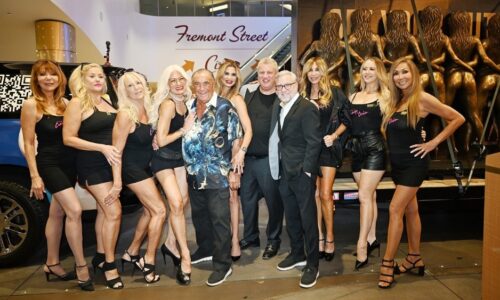When the Rat Pack swayed into the glitzy realm of Las Vegas, they didn’t just bring with them a repertoire of tunes and laughs; they brought an era of cool that would become synonymous with Sin City’s golden era. The effervescent camaraderie of Frank Sinatra, Dean Martin, Sammy Davis Jr., Peter Lawford, and Joey Bishop became the epitome of Las Vegas chic, weaving a narrative of entertainment that was as timeless as the desert stars. As we stroll down the nostalgic lanes of Las Vegas, let’s explore the indelible imprints left by the suave entourage known as The Rat Pack.
Table of Contents
The Birth of Cool
The Rat Pack’s rendezvous with Las Vegas commenced in the late 1950s, with the iconic Sands Hotel and Casino acting as the backdrop to this glamorous saga. The quintet brought a new wave of entertainment that was casual yet sophisticated, humorous yet classy. The ensemble’s first gig at the Copa Room in the Sands Hotel wasn’t merely a performance; it was the dawn of a new era of entertainment that would define the spirit of Las Vegas. Their playful banter, effortless camaraderie, and musical prowess on stage set the scene for a relationship that would etch the Rat Pack’s legacy in the heart of Sin City.
Redefining Entertainment
The Rat Pack’s approach to entertainment was groundbreaking. They shattered the conventional mold of performance, blending humor, music, and an unscripted appeal that made each show a unique experience. Sinatra, Martin, and Davis Jr. were masters of their craft, and together with Lawford and Bishop, they created a showbiz spectacle that left audiences enthralled. Their on-stage antics, mixed with a repertoire of hit songs and spontaneous interactions, created a cocktail of entertainment that was intoxicating to the audiences. They didn’t just perform; they created an atmosphere, a vibe that was quintessentially Vegas.
The Rat Pack’s Reign
At the helm of Las Vegas’ transformation into the entertainment capital of the world were the five charismatic members of the Rat Pack. They were the kings of the Strip, their names synonymous with a night of unparalleled entertainment. The city’s venues became their realm, and their performances were the crown jewels. The marquees bearing their names were not just advertisements but endorsements of the entertainment royalty that reigned over the neon-lit kingdom of Las Vegas. Their reign was not just about the tunes and the laughter; it was about setting a benchmark of cool that every entertainer in Las Vegas aspired to reach.
The Epicenter of Cool
The Sands Hotel and Casino wasn’t just a venue; it was the epicenter of cool, where the Rat Pack’s magic came to life. This iconic establishment was where the quintet dazzled audiences with their inimitable style and charisma. The Copa Room, with its intimate setup, became a crucible where the chemistry of the Rat Pack was tried, tested, and triumphantly showcased. The stage saw the blend of Sinatra’s mellifluous voice, Martin’s effortless charm, Davis Jr.’s multifaceted talents, Lawford’s suave demeanor, and Bishop’s witty banter. The Sands wasn’t just a hotel; it was a realm where the Rat Pack’s camaraderie blossomed, captivating the hearts of those who were fortunate enough to witness the magic unravel in person.
Breaking Barriers
Beyond the entertainment, the Rat Pack, especially Sinatra and Davis Jr., played a significant role in championing civil rights in a time of racial segregation. Their friendship transcended racial boundaries, showcasing a unity that was inspiring. Sammy Davis Jr., facing racial discrimination, found staunch allies in his Rat Pack brothers, particularly Sinatra. The Rat Pack insisted on equal treatment for all, and their stance led to the integration of Las Vegas hotels and casinos, marking a monumental shift in the societal fabric of the city. Their legacy wasn’t confined to the stages; it echoed through the corridors of equality and justice.
The End of an Era
The golden era of the Rat Pack wasn’t destined to last forever. As the 1960s rolled on, the ensemble saw fewer joint appearances. The sale of the Sands Hotel in 1967 symbolized the end of an era, and the magic of the Rat Pack started to disperse into the annals of history. Yet, the sunset of their reign wasn’t a goodbye; it was a legacy that had been cemented in the heart of Las Vegas. Their influence lingered, setting a high bar for the entertainers who followed, ensuring that the Rat Pack’s essence would remain an integral part of Las Vegas’ showbiz narrative.
Rat Pack’s Eternal Echo
The Rat Pack’s legacy continues to reverberate through the entertainment landscape of Las Vegas. Their influence is palpable in the modern residencies and performances that strive to capture the effortlessly cool and charismatic charm synonymous with the Rat Pack. Tribute shows, reminiscent performances, and memorabilia scattered across the city keep the spirit of the Rat Pack alive. Their names, their music, and their legendary camaraderie continue to be celebrated, reminding the world of a time when five extraordinary individuals defined the essence of cool in the heart of the desert.
Conclusion
The Rat Pack and Las Vegas shared a melodious relationship that was harmoniously synchronized with the beats of entertainment, camaraderie, and societal change. Their journey was a medley of laughter, music, friendship, and a sprinkle of rebellion that resonated with the ethos of Las Vegas. The Rat Pack didn’t just entertain; they left an indelible mark, a timeless legacy that continues to be a cornerstone of Las Vegas’ illustrious entertainment narrative. As the tunes of “Ain’t That a Kick in The Head” and “My Way” continue to serenade the desert nights, the legend of the Rat Pack sways in an eternal dance with the spirit of Las Vegas, reminding us of the golden era that will continue to shine bright in the annals of entertainment history.
Media credit: The conceptual image of the Rat Pack Las Vegas history in this article is copyright of VegasNews.com





